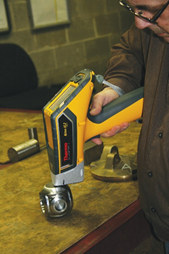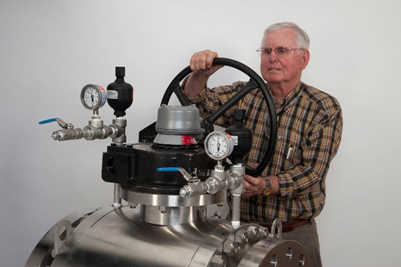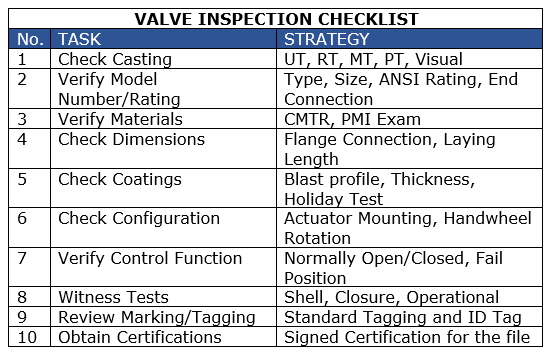Valve Inspection: An Essential Job
Industrial valves perform key functions in fluid processes and their failure can be detrimental to any major piping system or process.
#automation
Hence, many system owners employ dedicated equipment inspectors or third-party inspection firms to travel to foundries and valve factories across the globe to verify compliance with industry valve standards, project specifications, and system plans.
Many of the valves manufactured today are required to have special materials, features, and configurations that must be verified. The list of requirements can be immense, and Murphy’s law dictates that some items will be missed. As a result, conflicts between the valve properties and the project specification are inevitable and it is far better to resolve any conflicts at the valve factory than at the project site.
PROFESSIONAL INSPECTORS
Many system owners have a quality staff that includes certified inspectors. To learn more about the role of a valve inspector, VALVE Magazine reached out to the Philadelphia Water Department (PWD) with questions.
Richard Riddell is one of the department’s certified inspectors and explained3 that inspectors usually have related experience and receive on-the-job training and review all pertinent specs, past reports, and manufacturer’s files. They are expected to be familiar with the applicable industry valve standards and the quality processes used to qualify valves, especially production testing.
When things go wrong, Riddell said that he “gives the manufacturer a chance to resolve the problem and retest the equipment. But, depending on the nature of the problem and required repair and its occurrence in the testing sequence, other tests may need to be repeated.” Additionally, any variances in the specifications would be discussed with the engineers responsible for the (PWD) design.
INDUSTRY INSPECTION STANDARDS
To support the quality inspection process, industry organizations develop and publish standards.
Two guiding standards for valve testing are API Standard 5981 Valve Inspection and Testing and MSS Standard Practice SP-612. Both standards define the terms and provide standards related to the inspection and testing of industrial valves. Standard test methods are presented for various shell, backseat, and closure tests together with test durations and definitions of acceptable leakage criteria, depending on the test fluid.
When tests are to be witnessed, these standards require the manufacturer “to provide free access to any part of the factory concerned with the manufacturer of the valves whenever work on the order is underway”. The same rule applies to the suppliers, like foundries, of body components.
FOUNDRY INSPECTION METHODS
Foundry castings of valve bodies and closure members can be difficult to inspect because of their complex shape and varying thicknesses. One economical and common inspection process for castings is Ultrasonic Testing (UT) wherein sound waves are sent into the casting and the reflected wave is examined to verify thickness or hidden defects in the casting.
Another process is Radiographic Testing (RT) where the casting is exposed to an x-ray source and a film on the opposite side records images of defects in the casting. Another casting inspection process is Magnetic Particle Testing (MT), but this process does not work on non-magnetic materials such as stainless steel.
With all these examination methods, standards provide acceptance criteria for both linear and circular indications (i.e. porosity).
Finally, surface defects such as cracks, shrinks, inclusions, porosity and casting irregularities can also be identified visually with standards such as MSS SP-55, “Visual Method for Evaluation of Surface Irregularities”. Finally, the foundry will provide a Certified Material Test Report (CMTR) stating the chemical composition and physical properties of the casting, which can be compared to the applicable material specification and provide assurance of the casting’s structural integrity.
THE FINISHING TOUCH
For example, the coatings and linings of the valve can be verified by measuring the blast profile, the coating thickness, and checking for voids or holidays in the coating with generally available tools.
Some valves see severe service require the use pf special corrosion resistant alloys. The chemistry of these can be verified with the Positive Material Identification Process (PMI). Most manufacturers own an x-ray fluorescence (XRF) gun that detects the energy strength level from emitted from each element in a metal and identifies the alloy of the metal.
Therefore, it is a simple matter to verify the type of stainless steel. Portable hardness testers can also be used to estimate the tensile strength of materials as a final check against the CMTR. When the valve is equipped with motorized actuators or control equipment, it is essential to mount and calibrate all the equipment in the valve factory or a certified integrator’s facility. The verification of a sound coating, special alloys, and equipment calibration can provide the final assurance of valve quality.
Once all the testing is successfully completed, the inspector is expected to sign the test certification for the manufacturer’s file.
REFERENCES:
- American Petroleum Institute, API 598, “Valve Inspection and Testing”, 9th ed., 2009.
- Manufacturers Standardization Society, MSS SP-61, “Pressure Testing of Valves”, 2013.
- Riddell, Richard. Email responses of September 21, 2018.
- Manufacturers Standardization Society, MSS SP-55, Visual Method for Evaluation of Surface Irregularities, 2011. Headline photo represents the shell test of a 126-inch Butterfly Valve.
John V. Ballun, president and CEO of Val-Matic Valve, is a regular contributor to VALVE Magazine.
RELATED CONTENT
-
Regulators versus Control Valves: What’s the Best Fit?
The combination of North American shale fields that continue to fuel high levels of new domestic oil and gas projects and ongoing global efforts means the need for efficiency in instrumentation selection has never been higher.
-
The Dos and Don’ts of Isolating Pressure Relief Valves
Typically, isolation valves are used to block off a pressure safety valve (PSV) from system pressure, so that maintenance on the valve or related equipment can be conducted without a shut down.
-
Solenoid Valves: Direct Acting vs. Pilot-Operated
While presenting in a recent VMA Valve Basics 101 Course in Houston, I found myself in a familiar role: explaining solenoid valves (SOVs) to attendees. (I work with solenoids so much that one VMA member at that conference joked that I needed to be wearing an I Heart Solenoids t-shirt). During the hands-on “petting zoo” portion of the program, which involves smaller groups of attendees, one of the most frequently asked questions I get from people came up: What’s the difference between direct-acting and pilot-operated SOVs, and how do we make a choice?













 Unloading large gate valve.jpg;maxWidth=214)